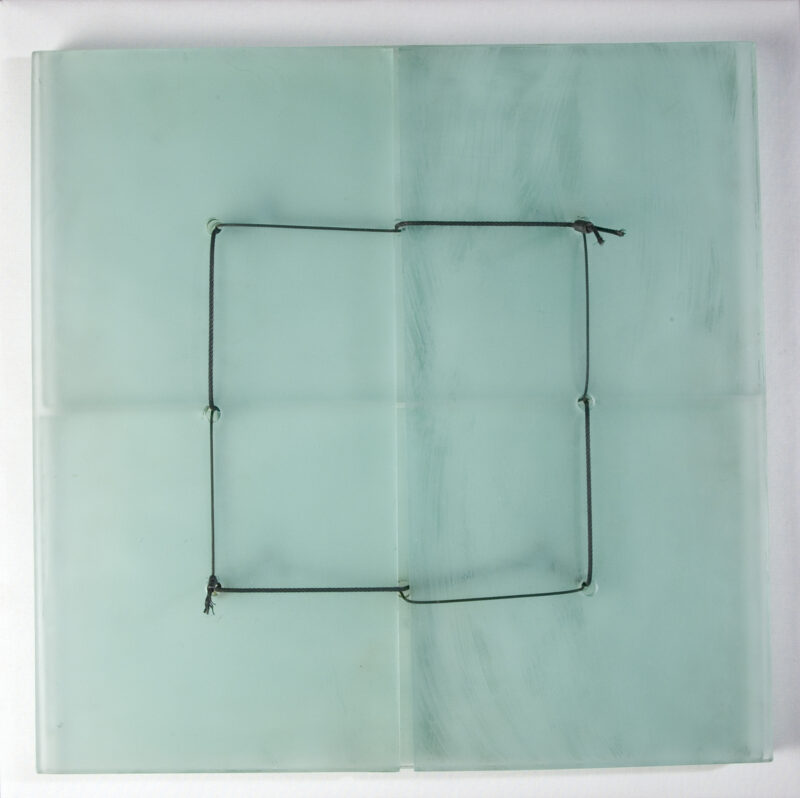
Expanding Drawing
Wilmarth, Christopher M.
1971
Artwork Information
-
Title:
Expanding Drawing
-
Artist:
Wilmarth, Christopher M.
-
Artist Bio:
American, 1943–1987
-
Date:
1971
-
Medium:
Glass and steel wire
-
Dimensions:
17 x 17 x 1 inches
-
Credit Line:
Wichita Art Museum, Museum purchase with funds donated by Marion and S. O. Beren, Wichita Art Museum Members Foundation
-
Object Number:
1972.26
-
Display:
Not Currently on Display
About the Artwork
Christopher Wilmarth was a transformative figure in American avant-garde art of the 1970s and 1980s whose tragic death closed off the promise of an ever more brilliant career. Wilmarth challenged the factual purity of minimalist sculpture by introducing elements of ambiguity, sensation, and subjectivity into hard edge geometric constructions made of industrial materials. He chose glass, not the malleable glass cores of decorative vessel design but the solid weighty glass sheets of industrial manufacture as his principal medium. He manipulated the glass through acid etching of its surfaces, bowing it, stitching pieces of it together with steel cable, pairing it with huge sheets of tooled, blackened steel, and in the latter part of his short career, shaping the glass into an evocative ovoid form reminiscent of Brancusi’s heads. Wilmarth, who also wrote poetry, identified with the French surrealist poet Stйphane Mallermй who believed that to name a thing was to kill it. For poet and sculptor true art resided in the interstices of meaning, feeling, and perceiving.
Expanding Drawing is a transitional piece, one of a series of like works executed by Wilmarth in 1970-71 in which he explored the possibilities of uniting the genres of drawing and painting with sculpture, and eliciting associations with human vulnerability within the context of such primal internationalist style materials as glass and steel. The three-dimensional drawing is comprised of two small sheets of etched glass drilled with six holes through which a steel cable has been threaded and knotted to create a diptych wall hanging.
In opposition to the perfectionist dogma of minimalism, Wilmarth presented elements of imprecision—the glass panels fit together unevenly—messiness—the knotted ends of the steel cable, some of its fibers frayed, are seen on the front of the piece—poetic dreaminess—the etched surface of the glass is a mottled opaque layer of opaque sea green tinting. Cable and glass read simultaneously as objects and as expressive symbols. In one sense the cable is a binding tool to hold two weighty plates of a decided thickness together. At the same time, the shadows that fall upon the irregularly etched and joined glass plates suggest a fine crinkled layer of delicate handmade paper that has been drawn upon by a firm hand wielding a charcoal stick.
Expanding Drawing is a lovely object and an excellent document of the unfolding of the aesthetic of a leading artist of the period.